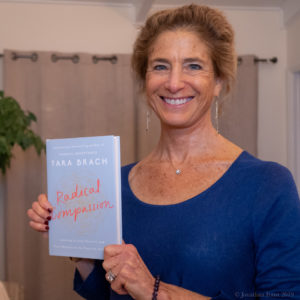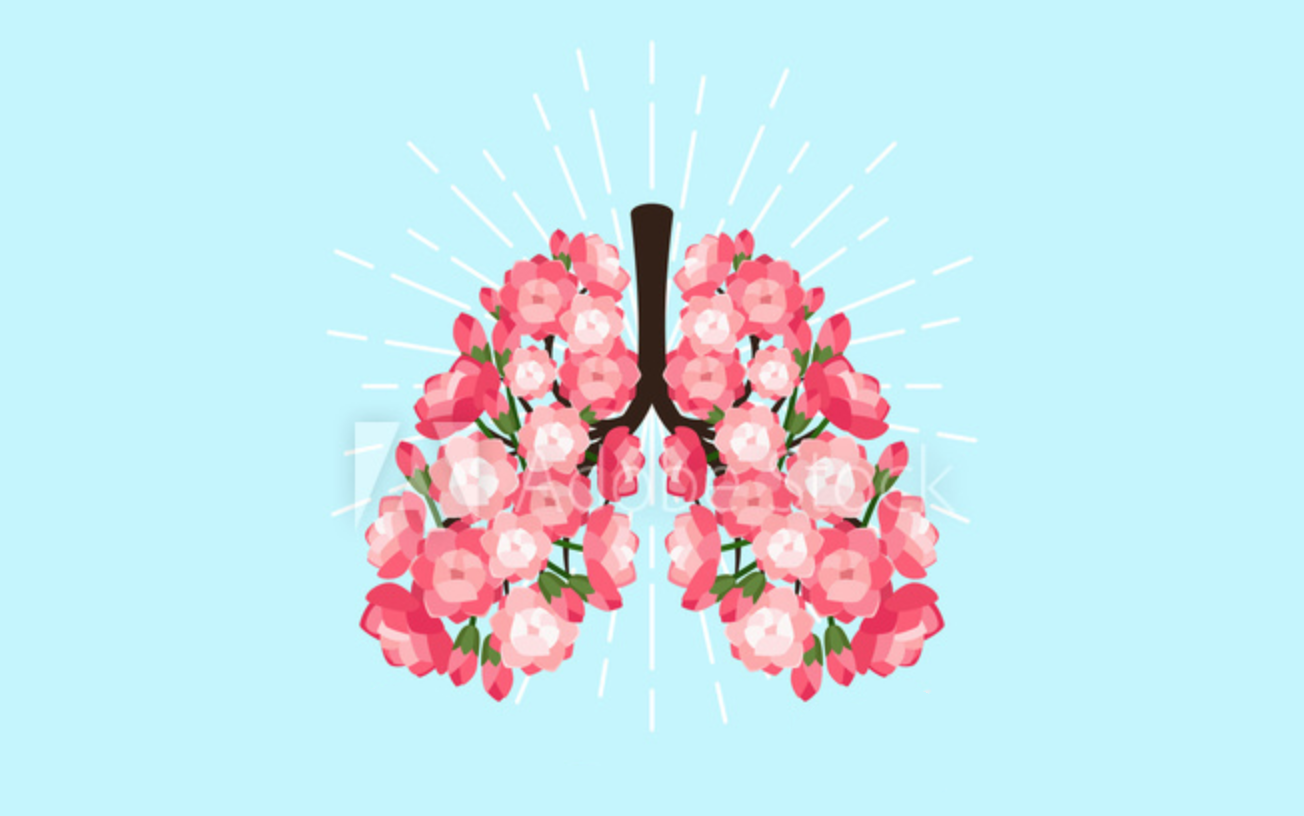CHAPTER ONE: RAIN Creates a Clearing
Do not try to save the whole world or do anything grandiose. Instead, create a clearing in the dense forest of your life.
~ Martha Postlewaite
 We all get lost in the dense forest of our lives, entangled in incessant worry and planning, in judgments of others, and in our busy striving to meet demands and solve problems. When we’re caught in that thicket, it’s easy to lose sight of what matters most. We forget how much we long to be kind and openhearted. We forget our ties to this sacred earth and to all living beings. And in a deep way, we forget who we are.
We all get lost in the dense forest of our lives, entangled in incessant worry and planning, in judgments of others, and in our busy striving to meet demands and solve problems. When we’re caught in that thicket, it’s easy to lose sight of what matters most. We forget how much we long to be kind and openhearted. We forget our ties to this sacred earth and to all living beings. And in a deep way, we forget who we are.
This forgetting is a part of being in trance—a partially unconscious state that, like a dream, is disconnected from the whole of reality. When we’re in trance, our minds are narrowed, fixated, and usually immersed in thought. Our hearts are often defended, anxious, or numb. Once you recognize the signs of trance, you will begin to see it everywhere, in yourself and others. You are in trance when you are living on autopilot, when you feel walled off and separate from those around you, when you are caught up in feeling fearful, angry, victimized, or deficient.
The good news is that we all have the capacity to free ourselves.
When we are lost in the forest, we can create a clearing simply by pausing and turning from our clamoring thoughts to become aware of our moment-to-moment experience. I call this wakeful and immediate awareness “presence.” It is also referred to as consciousness, spirit, Buddha nature, true nature, the awakened heartmind, and many other names. When we’ve reconnected fully to presence, we can open to what is going on inside us—the changing flow of sensations, feelings, and thoughts—without any resistance. This allows us to live our life moments with clarity and compassion. The shift from being lost in unconscious mental and emotional reactivity to inhabiting our full presence is an awakening from trance.
As we begin our journey together, the four steps of RAIN—Recognize, Allow, Investigate, Nurture—will be our tool for arriving in presence. Simply put, RAIN awakens mindfulness and compassion, applies them to the places where we are stuck, and untangles emotional suffering. It is easy to learn the basics, and you can begin to use the steps right away. RAIN creates a clearing in the dense forest, and in this clearing you can recover your full heart and spirit.
In this chapter, I’ll walk you briefly through each step of RAIN and offer a simple form of the practice—a warm-up— that you can apply in everyday situations. But first, the story of an afternoon when I needed RAIN.
“NOT ENOUGH TIME”
My dense forest hums with a background mantra: There’s not enough time. I know I’m not alone; many of us speed through the day, anxiously crossing tasks off the list. This often comes hand in hand with feeling beleaguered, annoyed at interruptions, and worried about what’s around the corner.
My anxiety escalates when I’m preparing for an upcoming teaching event. I remember an afternoon some years ago when I was in last-minute mode. I was madly searching through my very disorganized electronic files, trying to find material for a talk I’d be giving that evening on loving kindness. Much like the files, my mind was stirred up and muddy. At one point, my eighty-three-year-old mother, who had come to live with my husband, Jonathan, and me, popped into my office. She started to tell me about an article she liked from The New Yorker. But seeing me glued to the computer screen (and probably frowning), she quietly placed the magazine on my desk and left. As I turned to watch her retreat, something in me just stopped. She often came by for a casual chat, and now I was struck by the reality that she wouldn’t always be around for these companionable moments. And then I was struck again: Here I was, ignoring my mom and mentally scurrying around to compose a talk on love!
This wasn’t the first time I was jarred by forgetting what mattered. During that first year my mom lived with us, I repeatedly felt squeezed by the additional demands on my time. Often when we had dinner together, I’d be looking for the break in the conversation when I could excuse myself and get back to work. Or we’d be on errands or going to one of her doctor’s appointments, and rather than enjoying her company, I’d be fixated on how quickly we could get everything done. Our time together often felt obligatory: She was lonely, and I was the main person around. While she didn’t guilt-trip me— she was grateful for whatever time I offered—I felt guilty. And then when I’d slow down some, I also felt deep sadness.
That afternoon in my office, I decided to take a time-out and call on RAIN to help me deal with my anxiety about being prepared. I left my desk, went to a comfortable chair, and took a few moments to settle myself before beginning.
The first step was simply to Recognize (R) what was going on inside me—the circling of anxious thoughts and guilty feelings.
The second step was to Allow (A) what was happening by breathing and letting be. Even though I didn’t like what I was feeling, my intention was not to fix or change anything and, just as important, not to judge myself for feeling anxious or guilty.
Allowing made it possible to collect and deepen my attention before starting the third step: to Investigate (I) what felt most difficult. Now, with interest, I directed my attention to the feelings of anxiety in my body—a physical tightness, pulling and pressure around my heart. I asked the anxious part of me what it was believing, and the answer was deeply familiar: It believed I was going to fail. If I didn’t have every teaching and story fleshed out in advance, I’d do a bad job and let people down. But that same anxiety made me unavailable to my mother, so I was also failing someone I loved dearly. As I became conscious of these pulls of guilt and fear, I continued to Investigate. Contacting that torn, anxious part of myself, I asked, “What do you most need right now?” I could immediately sense that it needed care and reassurance that I was not going to fail in any real way. It needed to trust that the teachings would flow through me, and to trust the love that flows between my mother and me.
I’d arrived at the fourth step of RAIN, Nurture (N), and I sent a gentle message inward, directly to that anxious part: “It’s okay, sweetheart. You’ll be all right; we’ve been through this so many times before . . . trying to come through on all fronts.” I could feel a warm, comforting energy spreading through my body. Then there was a distinct shift: My heart softened a bit, my shoulders relaxed, and my mind felt more clear and open.
I sat still for another minute or two and let myself rest in this clearing, rather than quickly jumping back into work.
My pause for RAIN took only a few minutes, but it made a big difference. When I returned to my desk, I was no longer caught inside the story line that something bad was around the corner. Now that I wasn’t tight with anxiety, my thoughts and notes began to flow, and I remembered a story that was perfect for the talk. Pausing for RAIN had enabled me to reengage with the clarity and openheartedness that I hoped to talk about that evening. And later that afternoon, my mom and I took a short, sweet walk in the woods, arms linked.
Since then, I’ve done a brief version of RAIN with anxiety countless times. My anxiety hasn’t gone away, but something fundamental has changed. The anxiety doesn’t take over. I don’t get lost in the dense forest of trance. Instead, when I pause and then shift my attention from my story about getting things done to my actual experience in my body and heart, there’s a spontaneous shift to increased presence and kindness. Often I’ll keep working, but sometimes I decide to change gears, to step outside and play with my pup, make some tea, or water the plants. There’s more choice.
OUR PATHWAY OUT OF TRANCE: TAKING A U-TURN
When I’m in the trance of busily speeding through the day, I’m typically lost in thoughts, disconnected from my body, and cut off from my heart. RAIN provides a way out of trance through what I call a “U-turn” in attention.
We are taking a U-turn whenever we shift our attention from an outward fixation—another person, our thoughts, or our emotionally driven stories about what’s going on—to the real, living experience in our body. It’s like being at a scary movie where we’re totally gripped by the story on the screen and then suddenly become aware: Okay, it’s just a movie. I’m watching it with hundreds of other people. I can feel the seat under me, feel myself breathing. And we’re back again, aware of our own presence, grounded in our real life.
Only by purposefully bringing attention to our inner experience can we move from trance toward healing. We need to become aware of the circling anxious thoughts, the habitual tightness in our shoulders, the pressure from being in a rush. Then we can begin to turn from our stories—about someone else’s wrongness, about our own deficiencies, about trouble around the corner—to directly feel our fears, hurts, and vulnerability, and ultimately the tender wakefulness of our heart. This all-important shift unfolds progressively through the steps of RAIN. But the key is, we have to first realize we’re in trance!
AM I IN TRANCE OR IN PRESENCE?
 In teaching about awareness, I often use an image created by Joseph Campbell: a circle with a line through it.
In teaching about awareness, I often use an image created by Joseph Campbell: a circle with a line through it.
Above the line is everything we are conscious of, and below the line is everything outside our conscious awareness—a hidden world of fears, aversion, conditioning, and beliefs. To the degree that we’re living below the line, we’re in trance. Being in trance is like being in a dream. We’re unaware that there’s a larger, living reality. And awakening from trance is like waking from a dream. We become self-aware, directly experiencing our inner life, the world we belong to, and the space of awareness itself. Living above the line is living in presence.
Presence has three primary characteristics: wakefulness, openness, and tenderness or love. Many spiritual traditions describe presence as an open, sunlit sky. When presence is full, like the sky it is luminous and boundless, and it provides warmth and nourishment for life. All kinds of weather systems pass through it—happiness, sorrow, fear, excitement, grief— but like the sky itself, presence can hold them all.
We’ve all touched presence. We’re resting in presence in the moments before sleep when we become still and relaxed, listening to the rain on the roof. There’s a background of presence when we gaze in wonder at a star-filled sky. We open to presence in gratitude for someone’s unexpected kindness. We may never forget the presence we feel as we witness a birth or a death. Past and future recede, thoughts quiet, and we’re aware of being right here, right now.
In contrast, trance encloses us in a virtual reality of thoughts and emotionally charged stories. We’re trying to solve problems, satisfy desires, get rid of discomfort, or make our way to a future when things might be better. We are at the mercy of unconscious beliefs, feelings, and memories that drive our decisions and reactions to life. Not only that, but our unconscious wants and fears shape our deepest sense of who we are. When we’re in trance, we usually feel separate or alone, threatened, and/or incomplete.
Our daily trance can feel ordinary and familiar, wrapping us in a cocoon of habit. It can carry us in pleasurable fantasy, immerse us in obsessive thinking, and tumble us in waves of painful emotion. But whatever the content of our trance, we are cut off from ourselves and cut off from our capacity to connect authentically with those around us. We’re just not all there!
How do we know when we’re in trance? We often don’t know. But I’ve heard many people describe how they woke up to their particular versions of being under the line, in trance.
FLAGS OF TRANCE
- I realize I’ve just gone through a whole bag of trail mix.
- Everybody’s the bad guy today – my kids, my boss, my partner – I’m finding fault with the world.
- I catch myself sizing up other men to see who’s the most dominant.
- Even the small stuff seems like “just too much.”
- I’m listening to someone, and planning how to go outside for a cigarette.
- I lose an hour following links online.
- My neck starts hurting, and I realize my shoulders are up and knotted and that I’ve been anxious for hours.
- I notice the inner voice (my mother’s) saying, “Can’t you do anything right?”
- I’m walking through a store and suddenly realize I’m comparing my body with every other woman’s I see.
- I’m rushing around trying to get things done, and I hurt myself or break something or make a stupid mistake.
Recognizing our flags helps us to step out of trance. For me, this means that when I catch myself anxiously rerunning my to-do list, or feeling guilty about letting someone down, I become more alert. These wake-up calls help bring into consciousness my fear of falling short and the physical tension I’m carrying. Then I can remember that my fearful beliefs aren’t truth and that I have more choice as to how to spend my time.
TRANCE
|
PRESENCE |
| unconscious—below the line |
conscious—above the line |
| asleep, in a dream |
wakeful, lucid, aware |
| caught or possessed by emotions |
emotions witnessed mindfully |
| dissociated |
in contact with feelings |
| heart defended or numb |
heart caring and tender |
| reactive to experiences |
responsive to experiences |
| grasping or resisting |
balanced, open, and discerning |
Ask yourself, “Right now, what is my experience of presence?” or “Is there anything between me and presence?” Even these simple inquiries can alert you to trance and begin to awaken your awareness.
Or look back on your day and scan for the times when you were under the line. Can you identify some of the flags of trance for you? Sometimes in trance there’s just enough consciousness to recognize that you’re struggling, conflicted, shut down, or anxious. These wake-up calls let you know you need the healing—the sunlit sky—that is available above the line. This is when you call on RAIN.
LOVE SHINES THROUGH THE CLEARING
Four years after moving in with Jonathan and me, my mother was diagnosed with lung cancer. One afternoon six months later—about three weeks before her death—I sat by her bedside reading from a book of short stories we both love. She fell asleep as I was reading, and I sat there watching her resting easily. After some minutes, she woke up and mumbled, “Oh, I thought you’d be gone; you have so much to do.” I leaned over, kissed her cheek, and continued to sit with her. She fell back to sleep, a slight smile on her lips.
I did have a lot to do. I always have a lot to do. I flashed on being too busy to pause and talk about that New Yorker article, and all those times I’d rushed through our shared dinners, felt dutiful about spending time together and guilty when I saw her walking outside alone. But my practice of RAIN had changed something. In our final years together, I was able to pause and really be there. I was there for making our supersized salads, for walking our dogs by the river, for watching the news, for chatting long after we’d finished a meal.
Twenty minutes later, my mother woke up again and whispered, “You’re still here.” I took her hand and she soon drifted off. I began crying silently, and something in her was attuned because she squeezed my hand. Oh, I’d miss her terribly. But my tears were also tears of gratitude for all the moments we lived together. And for the clearings that made this possible. On the day of her death, I was filled with immense sorrow and love, but no regrets.
Learning to create a clearing gives us our life. It is what opens us to the unfolding of radical compassion. When we’re in trance, we can’t really listen as our child shares excitedly about what happened at school. We can’t pick up that a colleague is acting uptight because they are struggling with self-doubt and fear. We miss out on sunsets, chances to play, openings for intimacy, attunement to our own loneliness or longings. The practice of RAIN brings us above the line and lets us reconnect with presence and our naturally caring hearts.
REFLECTION: THE U-TURN TO PRESENCE
You might consider this a warm-up to practicing RAIN, something you can explore when you’re stressed, rushing, and anxious. This simple reflection can reconnect you with a sense of inner resourcefulness, self-compassion, and choice as to how you live your days.
Experiment with the U-turn at a time when you realize you’ve been lost in thought—perhaps obsessive worrying or planning, judging or fantasizing. Begin by pausing, sitting comfortably, and allowing your eyes to close. Take a few deep breaths, and with each exhale let go of any obvious tension in your mind and body.
Now shift your attention fully away from any remaining stories or thoughts, and notice your actual present-moment experience. What sensations are you aware of in your body? Are there any strong emotions present? Do you feel anxious or restless as you try to step out of your mental stories? Do you feel pulled to resume your activity? Can you simply stay right here, for just these few moments, and be with whatever is unfolding inside you? What happens if you intentionally regard your experience with kindness?
When you resume activity, notice if you sense any shift in the quality of your presence, energy, and mood.

QUESTIONS AND RESPONSES
Is it possible to experience presence when you’re angry?
Yes! You are in a state of presence (above the line) when you’re aware of the blaming thoughts and physical experience of anger. During these moments, in addition to the anger, there’s a sense of witnessing the anger and some choice in how you respond. In contrast, you’re in trance if you’re lost inside the cycling thoughts and feelings of blame, with no sense of choice or control.
Do you have to follow a particular spiritual path to work with RAIN?
RAIN is a tool that can be used by anyone seeking to deepen self-understanding, self-compassion, compassion for others, and emotional healing and spiritual awakening. There is no requirement to hold a particular set of religious or spiritual beliefs. Whatever your beliefs, RAIN will enhance your direct experience of being awake and open, present and kind.
I have a regular mindfulness practice. Is RAIN a substitute for this? Or do they fit together?
They naturally weave together. The first two steps of RAIN, Recognize and Allow, are the foundation of mindful awareness and compassion. The second two steps, Investigate and Nurture, deepen mindfulness and directly activate compassion.
RAIN can be your tool for bringing mindfulness and compassion to a particular challenge. To explore this, continue with your regular mindfulness practice until you feel caught in a difficult emotion. In that moment, call on RAIN to guide you in systematically offering a mindful and kind attention directly to the emotional tangle. Once the tangle has loosened, return to your regular practice of moment-to-moment mindfulness.
In addition to including RAIN in the midst of a meditation sitting, you can pause anytime during the day when you feel stuck or challenged and call on RAIN to assist you.
Sometimes when I’m doing yoga, strong emotions like fear, anger, and self-doubt will come up. Can RAIN help at these times?
It’s quite natural to experience strong emotions during a range of body-mind practices like yoga, tai chi, chi gung, breathwork, Reiki, guided imagery, and biofeedback. Many people have found that integrating a pause for RAIN opens the way to profound emotional healing and brings a powerful synergy to their path.

Chapter One from Radical Compassion: Learning to Love Ourselves and Our World with the Practice of RAIN, Tara Brach (Viking, 2019).
Brach, T. (2019). Radical Compassion: Learning to Love Yourself and Your World with the Practice of Rain. New York, NY: Viking Life.
The post Radical Compassion – Chapter One appeared first on Tara Brach.
from RSSMix.com Mix ID 8196908 https://www.tarabrach.com/radical-compassion-chapter-one/













